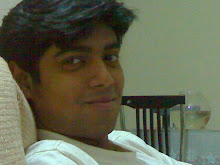Leaps of faith for a better tomorrow
April 16, 2006. Published in DNA
Can a new faith bring with it a new life? Mohammad Saleem Adil, a 47-year-old lawyer based in Delhi, says it can. A decade-and-a-half ago, Adil was Satbir Jathav, a Dalit who had been enduring years of social discrimination. Then he decided to embrace Islam.
“There was a need to connect, to not be persecuted for being born an untouchable,” he says. “This was possible, I found out, in the same lifetime, but only by discarding Hinduism. I was an outcast all my life. Then, after converting, I felt like I finally belonged.”
Thousands of miles away, in the Burdwan district of West Bengal, primary schoolteacher Jyotirmoy Mondol embraced Buddhism around the same time. The 35-year-old’s reason: in a neighbouring shanty, a Chamar family was publicly beaten up by locals for allegedly skinning a live cow.
“Economically they were much below me,” he explains, “but socially we belonged to the same strata. I could not sleep for nights after that incident. The conversion was like a rebirth; I felt at peace with myself. The stigma of being a lowly-born was no more.”
All Dalit conversions, though, are not knee-jerk reactions to caste inequities or discrimination. Dalit intellectual Chandrabhan Prasad cites the example of the backward castes of Meenakshipuram in Tamil Nadu, who for seven long years discussed the issue of conversion before giving up on Hinduism.
“In 1981, to free themselves from untouchability and police harassment, 150 Dalit families from this village in Tirunelvelli district embraced Islam; Meenakshipuram became Rahmat Nagar,” he recalls. “With conversion came wealth and several of them got jobs in the Gulf counties.”
There are other instances. From being an entirely marginalised community of toddy tappers and coir weavers who were not allowed into upper-caste Hindu temples and whose women were supposed to leave their breasts uncovered, the Nadars of Tamil Nadu gained immense socio-economic mobility by embracing Christianity in big numbers in the late 18th century.
This was the community that would engender achievers such as the late Tamil Nadu chief minister K Kamaraj, the Amritraj brothers of tennis and Shiv Nadar, founder of the HCL group of companies.
There is another side to the conversion argument, one advanced most forcefully by the Hindutva brigade. This is that moving to another faith brings about no discernable change in the way society treats Dalits: whether you are a Dalit Buddhist, a Dalit Christian or a Dalit Muslim, you were, are, and will remain a Dalit.
“The Hindu right-wing argument is that Dalits learned the futility of conversions long before the advent of ‘foreign’ religions like Islam and Christianity,” says Kolkata-based social anthropologist Bibek Sinha.
“Those who converted to Buddhism to escape social ostracism reconverted to Hinduism to avail of the benefits of becoming dwija [twice-born] through good karma in the present birth.”
Delhi-based journalist and minority rights activist Anis Jamee says ‘foreign’ religions like Islam and Christianity have been, over the years, Indianised.
“Even after you convert, your caste identity remains with you.” But Sinha prefers to focus on the benefits. “Christianity offers the most goodies to the Dalit,” he says, “and with proselytising comes the exposure to Western education.”
“The inequalities are not as stark as in Hinduism, and untouchability, the worst of human indignities, is definitely not followed in other religions,” contends Prasad. “The fact is that most Dalit converts today are happy with the new faith they have embraced. In 1956, over 5 million Dalits, led by Ambedkar, renounced Hinduism and became Buddhists to escape from the caste system. Ideally, Hinduism should be cleansed from within. But that is another story. Till then there are other gods to turn to.”


0 Comments:
Post a Comment
Subscribe to Post Comments [Atom]
<< Home